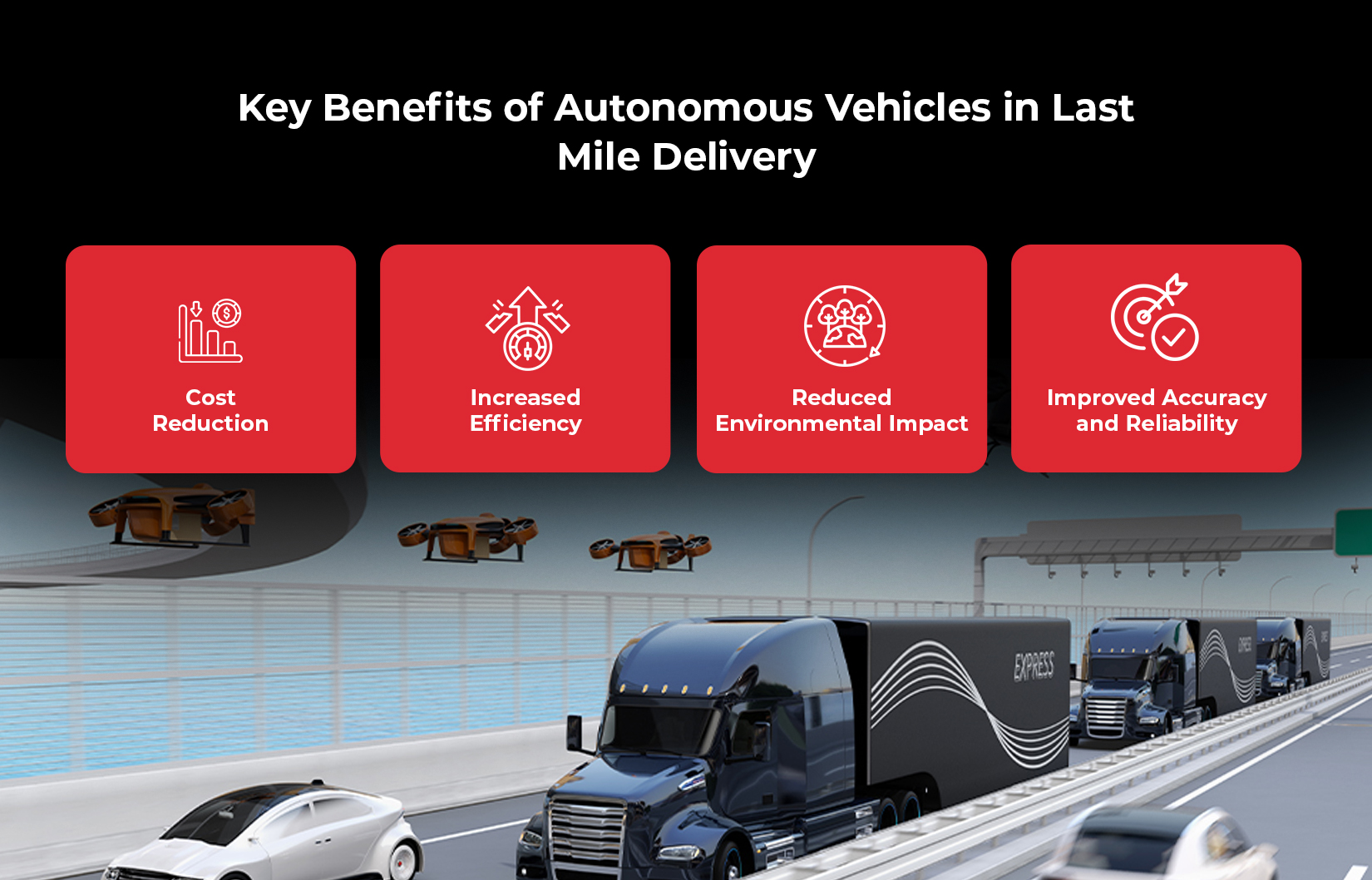
How Autonomous Delivery Vehicles are Redefining Last Mile Delivery
In the ever-evolving world of logistics, the “last mile” represents the final and most crucial leg of the delivery journey—where goods travel from a transportation hub to their final destination. For businesses, it’s the most expensive and time-sensitive part of the supply chain. This is where autonomous delivery vehicles are beginning to make a significant impact, offering a solution to the challenges of last mile delivery, while optimizing cost, efficiency, and customer satisfaction.
The Rising Costs of Last Mile Delivery
Last Mile Delivery is notorious for its high costs. Research shows that it accounts for 53% of overall shipping costs. The complexity lies in the need to delivery goods to multiple destinations. As factors like unpredictable traffic conditions, delays and customer availability affect the deliveries. With rising consumer expectations for faster and more precise deliveries, logistics companies are under pressure to streamline last mile delivery without increasing expenses.
This is where autonomous delivery vehicles are stepping in, promising to reshape the entire landscape. By reducing reliance on human drivers and offering continuous operations, these vehicles bring both cost savings and enhanced operational efficiency.
How Autonomous Delivery Vehicles Work?
Autonomous delivery vehicles leverage advanced technologies like GPS, sensors and artificial intelligence (AI) to navigate urban environments. Equipped with real time route optimization systems, these vehicles can make adjustments on the fly, avoiding traffic and recalculating routes. This allows them to efficiently deliver goods to multiple stops without human intervention. The best last mile delivery software integrated into these vehicles allows logistics managers to track each vehicle’s progress in real time. This ensures both precision and accountability.
For logistics companies, these innovations mean fewer labor costs, reduced fuel consumption and a lower chance of human error—significantly impacting the bottom line. For instance, a 2023 McKinsey study predicts that autonomous delivery could lower last mile delivery costs by up to 40%, thanks to fuel efficiency and reduced labor dependency.
Key Benefits of Autonomous Vehicle in Last Mile Delivery

1. Cost Reduction:
Autonomous vehicles eliminate the need for drivers, reducing labor costs and allowing 24/7 operations. Since these vehicles use AI to optimize routes in real time, they also cut down on fuel consumption adding to overall savings.
2. Increased Efficiency:
The integration of last mile delivery tracking system ensures that deliveries are made promptly. Autonomous vehicles, combined with robust software, can determine the most efficient routes, reducing delivery times and boosting customer satisfaction.
3. Reduced Environmental Impact:
Many autonomous vehicles are electric, contributing to lower emissions. As sustainability becomes a key focus for both businesses and consumers, this green approach offers a competitive advantage.
4. Improved Accuracy and Reliability:
These vehicles are equipped with sophisticated sensors and AI algorithms that ensure accuracy in delivery. With last mile delivery management solutions, logistics managers can monitor deliveries in real time, making adjustments when needed. This precision reduces failed deliveries and returns, a significant pain point in traditional last mile operations.
Real World Implications of Autonomous Delivery
Autonomous delivery vehicles are quickly reshaping the last mile delivery landscape, with real-world applications showing impressive results. Several companies have integrated autonomous technologies like delivery drones, robots, and larger self-driving trucks to streamline their operations. These innovations are particularly effective in urban settings, where delivery drones and robots navigate congested areas to drop off packages efficiently. Autonomous trucks, on the other hand, handle bulk deliveries to distribution hubs, reducing manual intervention.
A prominent logistics company recently reported a 20% reduction in delivery times after incorporating autonomous vehicles into its fleet. This improvement demonstrates the potential of automation in enhancing operational efficiency, especially during last mile delivery—an infamous complex and costly phase of logistics.
The best last mile delivery software used by these companies seamlessly integrates with autonomous systems, providing real-time tracking and robust data analysis. This transparency allows companies to monitor the entire delivery process closely, identify potential delays, and make quick adjustments. Real-time updates also keep customers informed, building trust and improving overall satisfaction. As more businesses adopt autonomous solutions, these advancements will continue to revolutionize last mile delivery, cutting costs, and ensuring faster, more reliable service.
Overcoming the Challenges
Despite their advantages, autonomous delivery vehicles still face challenges. Regulatory hurdles, safety concerns, and infrastructure limitations are among the key barriers. Many regions are yet to establish clear regulations governing the use of autonomous vehicles for commercial purposes. Additionally, urban areas may lack the necessary infrastructure to support these vehicles, such as dedicated lanes or charging stations for electric autonomous fleets.
However, experts believe that these challenges will diminish as technology advances and infrastructure adapts. The potential benefits far outweigh the temporary obstacles, making autonomous delivery vehicles a critical component of future last mile delivery operations.
The Future of Last Mile Delivery
As consumer expectations for fast, accurate deliveries continue to rise, logistics companies are under increasing pressure to find solutions that reduce costs while improving delivery performance. Autonomous vehicles represent a major step forward in this pursuit. With the help of last mile delivery tracking systems, businesses can ensure transparency, timeliness, and efficiency in their operations.
According to industry analysts, the global market for autonomous last mile delivery is expected to grow at a compound annual growth rate (CAGR) of 24.4% between 2023 and 2030, highlighting the growing interest and investment in this area. As more logistics companies adopt this technology, we will likely see a significant transformation in how it is managed and executed.
Conclusion
Autonomous delivery vehicles are reshaping the future of last mile delivery. From cutting costs and improving efficiency to reducing environmental impact, these vehicles offer a promising solution to the many challenges facing logistics companies today. As technology continues to evolve, and with the support of the best last mile delivery software and management systems, the role of autonomous vehicles will only expand. Click on the red button below to book a demo with LogiNext and transform your logistics needs.
65







@LogiNext